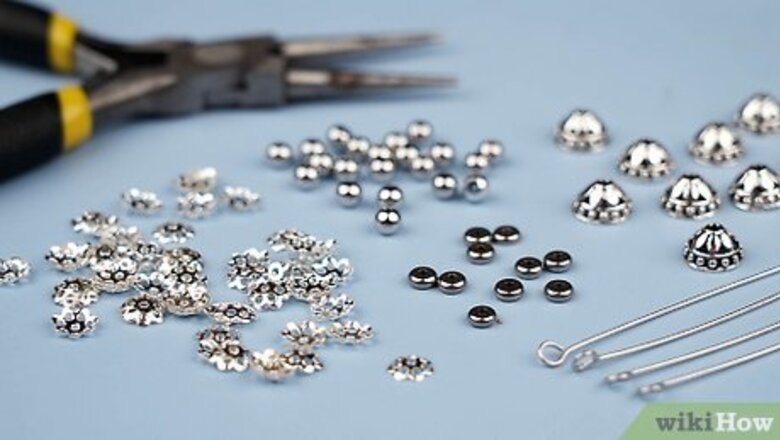
views
- For a wire-band ring, cut about 5 inches of wire and add a centerpiece bead; create a stopper on the band, and add beads until the ring is complete.
- For an elastic ring, thread a needle with an elastic string; then string your bead cap and add round beads, spacers, and a centerpiece.
- Test the length of the ring, then secure the open end of a wire ring or knot an elastic ring to finish off your project.
Making a Beaded Elastic Ring
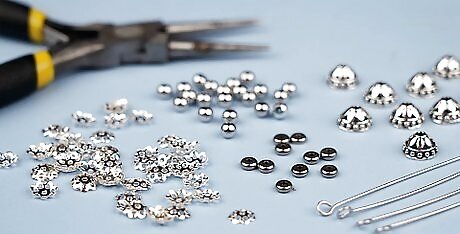
Gather your beading equipment. This design of beaded ring is ideal for displaying a lovely centerpiece, like a lampwork bead, tablet or tube bead, or other kinds of glass bead. Choose your elastic so that it fits your centerpiece, and along with the centerpiece and elastic, also be sure you have: Bead stringing elastic (6-8 in (15 - 20 cm)) Centerpiece bead Scissors Sterling silver "daisy" spacers (about 40) Sterling silver bead caps (2) Sterling silver round beads (3; size 4 mm) Wire needle
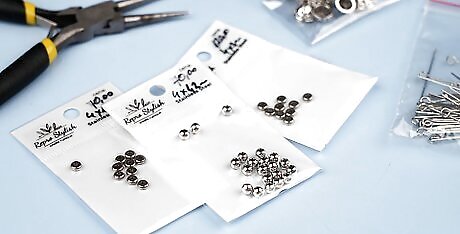
Arrange your supplies. Having your beads separated into containers can decrease the time you spend hunting for your next bead and prevent irritating spills. Take a moment and, depending on your supplies, use a small container to hold and divide your beads by type. If you bought in bulk, a tupperware container is a great option for bead storage. Ramekins and smaller sized, wide mouthed cups work well for smaller amounts of beads.
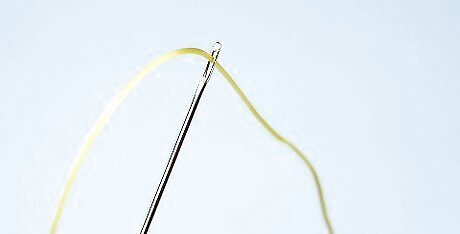
Thread your needle. Using a wire needle will make it easier for you to thread your beads onto your elastic, and will also give you something to hold on to, making dropped thread and beads less likely. To thread your needle: Hold your thread firmly between your forefinger and thumb as close to its end as possible. Take your needle with your free hand and push its eye onto the thread until it is threaded.
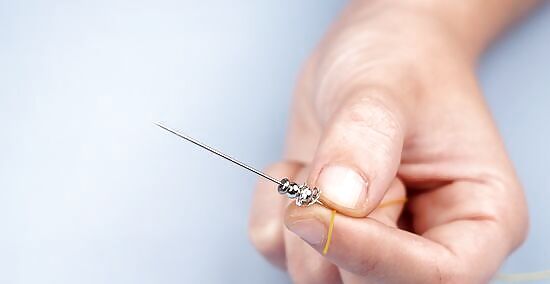
String your bead cap and add beads. Bead caps on either side of your centerpiece will create a lovely, professional looking setting. Your first "bead," after your centerpiece, should be your cap followed immediately by a silver bead. Then add daisy spacers until you have reached about halfway around the band of your ring. You can check to see if you've reached the halfway point by holding your centerpiece on the top of your finger and drawing the band around your finger. If the band reaches halfway around your finger, you're ready to move on. Be sure you have a firm hold of the end of your string when measuring. Beads can easily fall off.
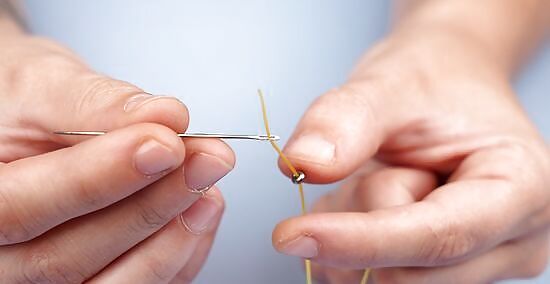
Add another silver round bead and more daisy spacers. Mark the halfway point with a silver bead and then continue threading your daisy spacers onto your line. The number of daisy spacers you use should be the same to create a symmetrical, polished appearance. As you add more spacers, periodically check the length of the band. Hold the centerpiece to the top of your finger and use your free hand to wrap it around. Be careful to keep the end of your line firmly gripped to prevent beads from falling off. Your ring should feel snug on your finger when you have threaded your last spacer.
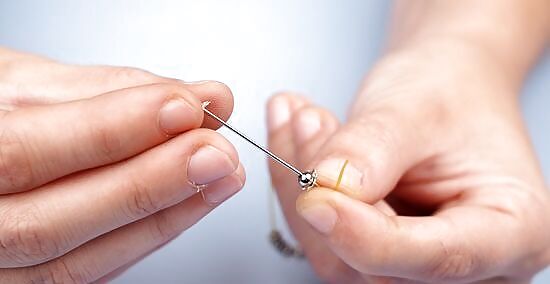
Thread your final round bead, bead cap, and centerpiece. Now that the spacers are finished, your ring is almost complete. All you need to do is thread your needle through the final silver round bead to reflect the bead on the outside of your first bead cap. Then: Follow your bead with the ending bead cap to complete the a setting around your centerpiece. Thread your needle through your centerpiece bead.
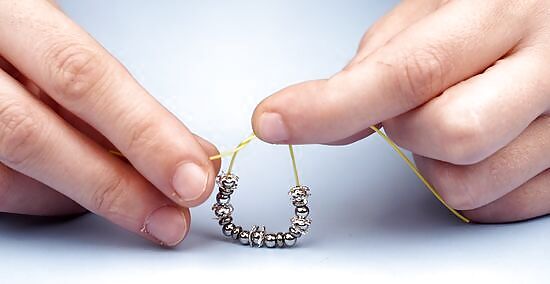
Knot the band to finish your beaded ring. Hold your band firmly so there is no wasted excess in the band. Extra band will translate to a loose ring in the end. Secure both ends with a surgeons knot and then hide it by: Crossing your needle over the opposite end to form a loop. Taking your needle through the loop twice. Pulling the knot tight to make it as small as possible. Wiggling the band until the knot is covered by your centerpiece.
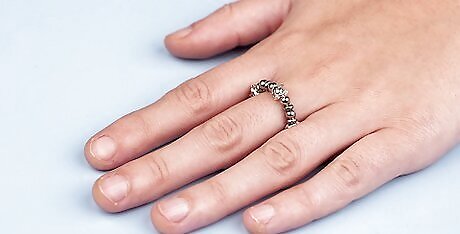
Finished.
Making a Wire Banded Beaded Ring
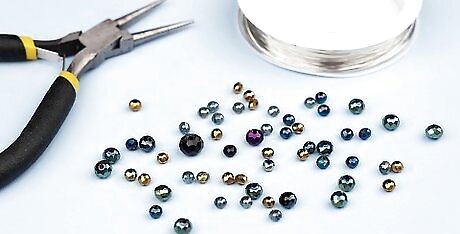
Assemble your ring-making supplies. You'll need to make sure that the wire you choose is thin enough for your seed beads, which can come in different sizes. If you are interested in using a thicker gauge wire, you should be sure the beads you purchase fit the thicker wire. Size 15/0 seed beads (1.3 mm) should usually be able to fit on 16 gauge wire and thinner. Larger seed beads, like size 6/0 (3.3 mm), will accommodate thicker wire, in this case eight gauge and thinner. Due to differences in the finishing process of seed beads used by bead producers, seed bead diameters are only an approximation, and may require thicker or thinner wire.

Prepare your work space. You should be sure that your work area is clear before you attempt to cut and shape the band of your ring. You might also consider putting your beads into containers. This will make the beads more accessible and decrease your chances of a spill.
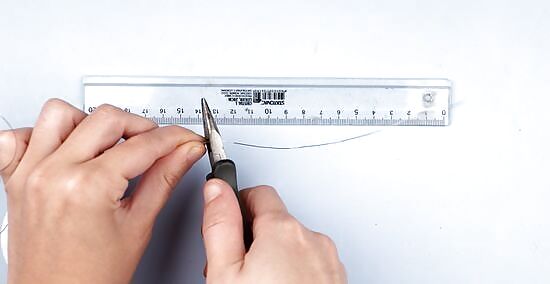
Cut the band of your ring. Take your ruler and measure out about five inches (13 cm) of wire. Then bend it slightly where you have measured to mark where you will cut. You may need your pliers to bend the wire, but once you do: Use your wire snips to cut loose the wire you will be using as the band of your ring.

Add your centerpiece bead. This is the main bead that will form the top of your ring. Using a large bead for your centerpiece can give your ring a cool distinguishing feature, but if you prefer, a regular sized bead will work just as well. Simply thread your centerpiece bead onto the end of your wire. If a bead centerpiece isn't your style, you might think about using a charm attached to a jump ring. Be sure your jump ring is small enough that it is held in place by the beads you will be threading on your band.
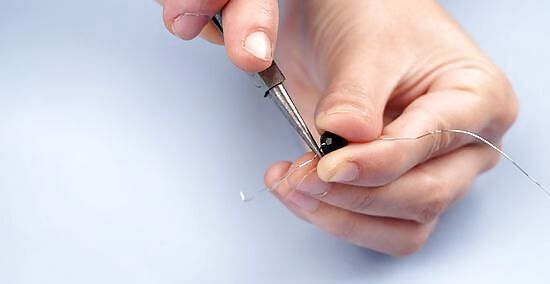
Create a stopper for your centerpiece. Take your needle nose pliers and grasp the wire where you have just threaded your bead. Hold the wire firmly with your pliers, and then bend it over the bead to create a small, squashed loop. This bend in the wire will prevent beads slipping off as you work.
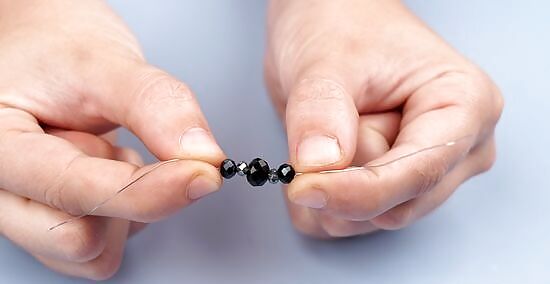
Slip a bead through the free end of your wire. Then you'll be able to thread it all the way down your wire until it joins your centerpiece bead. Keep in mind that your first bead will form the top of your ring, and the beads following it will wrap around the band. Alternating short patterns by using two or three beads of different color can create nifty designs in your ring. Keep your patterns short; the band of your ring will likely not be long enough to work with longer patterns.

Add beads until the band of your ring is complete. As you add beads and the band of your ring grows in length, you should hold your finger alongside to gauge whether or not the band is big enough for you. Don't worry about using too many beads; you can always take some off.
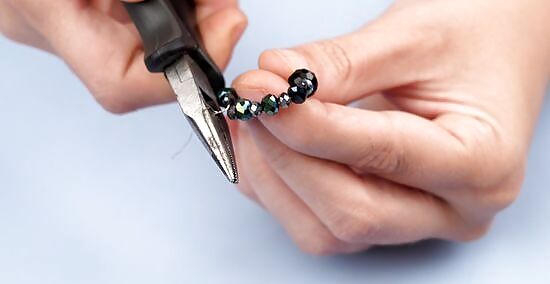
Test the length of the band of your ring. Coil your wire so that it loops in on itself, with the unbent end circling around to meet the other end. Hold the free end with your hand, and then tighten the loop around the finger of your free hand to see if your beads wrap the full way around to form a snug fitting band. If the band of your ring is too tight, you should add a few more beads. If the band is too loose, simply remove a few beads and then try it on your finger again.
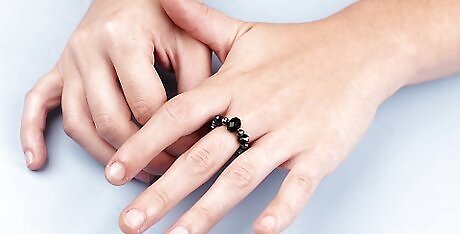
Finish your beaded ring by securing the open end. Thread the free end of your wire through the loop you made to hold your centerpiece in place. Then, wrap the excess wire two or three times around the band to secure it in place. Finish your beaded ring by using your wire snips to cut free any left over wire. Bend any sharp edges either inward toward a bead or outward and away from where your finger will go to prevent being poked by your snipped wire.




















Comments
0 comment